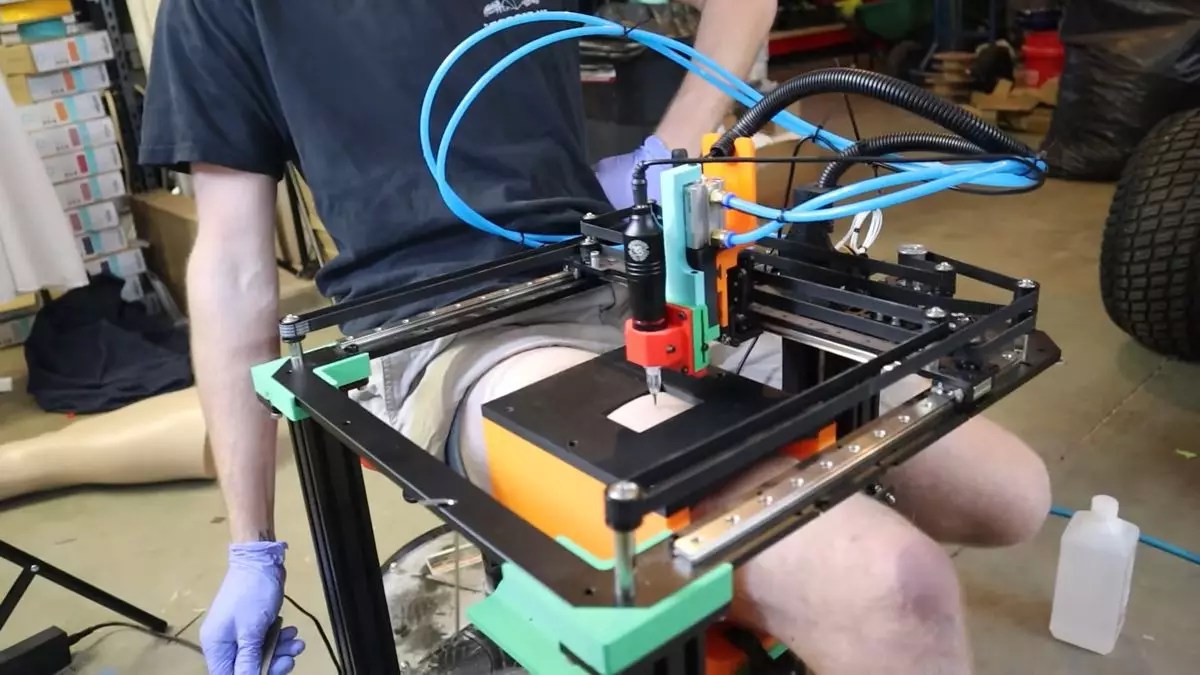Tattoos hold a unique place in human culture, often serving as a canvas for personal expression, commemoration, or simply as a form of art. For many, getting inked by a skilled tattoo artist represents a lasting commitment, both financially and physically. However, YouTuber Emily The Engineer recently undertook an audacious project that turns this conventionality on its head: transforming a 3D printer into a tattoo machine. Through her innovative approach, Emily has not only redefined the process of getting a tattoo but has also opened the door to a myriad of possibilities within the realm of DIY body art.
This pioneering effort is not without its risks. Despite only having one tattoo herself—one meticulously crafted by an experienced professional—Emily saw potential in using her 3D printer for a purpose far beyond its typical applications. The idea of bypassing the printer’s firmware and converting it into a tattoo apparatus conjures an image of creative experimentation tinged with peril. One could argue that true innovation often straddles a fine line between genius and recklessness.
To embark on this unconventional journey, Emily disassembled an old 3D printer, skillfully manipulating its mechanics to ensure it could map out designs accurately on a flat surface. However, the transition from 3D printing to tattooing required more than just physical alterations; it involved reprogramming the machine to disregard usual constraints like temperature settings and the type of mediums typically used for printing.
The process began with basic sketches to evaluate how well the system could replicate designs. Initial tests were conducted on paper and even imprinted on the back of Emily’s own hand to gauge the machine’s fidelity. Eventually, with some clever engineering, the plan was set to incorporate a tattoo gun into this makeshift assembly. The endeavor reached a courageous milestone when Emily affixed the tattoo equipment to the print head for the first time.
Yet, as with many groundbreaking experiments, challenges arose. The tattooing process encountered limitations due to the compound curves of the human body. Unlike the flat surfaces typical in 3D printing, skin presents a variable topography. Specifically, this impediment became evident when Emily’s designated volunteer, Dan, requested a design on his leg, inherently a non-flat surface. Instead of scrapping the project, Emily constructed a custom bracket to flatten Dan’s thigh momentarily, allowing the machine to operate effectively.
In any creative endeavor involving the human body, safety must be paramount. Emily cleverly introduced a lever-controlled solenoid to mitigate risks, allowing her to lift the tattoo machine off the skin if something went awry. This emphasis on security reveals a thoughtful approach that contrasts sharply with the often reckless spirit of DIY projects.
Following a final test on material resembling human skin, Dan endured the moment of truth: the machine’s needle pierced his skin. Remarkably, he described the sensation as tolerable, showcasing a level of bravery that many might not possess when faced with a contraption of Emily’s design. His willingness to test such an unorthodox invention highlights the human spirit’s thirst for novelty and adventure.
Upon completion of the tattoo, both Emily and Dan found themselves at a crossroads of their initial expectations versus reality. While the tattoo might not achieve the finesse of those crafted by seasoned tattoo artists, it nonetheless stands testament to human ingenuity. Dan, now with the ink permanently etched into his skin, perhaps has a conversation starter for life, reflecting on the myriad ways in which technology influences our choices and experiences.
In a world filled with continuous innovation, Emily The Engineer’s venture symbolizes the untapped potential of merging traditional art with contemporary technology. While her tattoo machine might not be the futuristic marvel of our dreams, it serves as an inspiring reminder that creativity knows no bounds. As we look forward to more projects of this kind, one has to wonder: What other aspects of life will technology transform next?


Leave a Reply